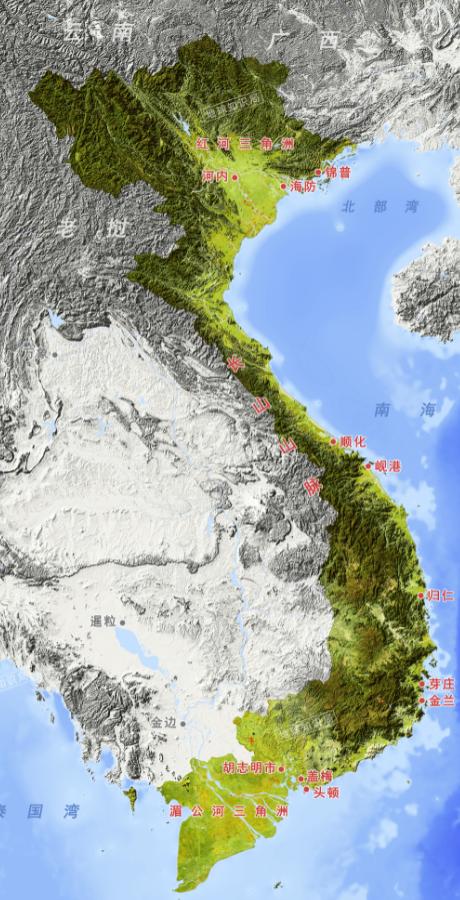等离子波导翻译(英读廊等离子到底是什么)
* 用英语自身来理解和学习英语是最好的方式,《英读廊》是《满庭说英语》中的拓展阅读系列,这一系列的文章力求帮助大家在英语阅读能力上有所提升,并树立英语思维;* 推荐的阅读的方法是:先原文,适当看解析阅读,还有疑惑再看双语对照。* 解析中英语单词的音标使用Dictcom和IPA双音标标注,如果需要了解Dictcom音标,请参看我们的《dictionary.com所用的音标体系》一文。* 本篇文章难度系数10.2,由《小仙英语伴读》人工智能难度分析系统提供评分。
#英语思维#
#英语#
#等离子#

What exactly is plasma?【译】等离子到底是什么?【单词】exactly [ig-'zakt-lee][ɪɡ'zæktli] adv. 精确地;确切地;完全地;严密地;正是【单词】plasma ['plaz-muh]['plæzmə] n. 等离子体;血浆
How do the grape in microwave experiments create plasma?【译】微波实验中的葡萄是如何产生等离子体的?【单词】grape [greyp][ɡreɪp] n. 葡萄;葡萄树【单词】microwave ['mahy-kroh-weyv]['maɪkrəweɪv] n. 微波;微波炉【单词】experiments 原型:experiment [ik-'sper-uh-muhnt][ɪk'sperɪmənt] n. 试验;实验;尝试【单词】create [kree-'eyt][kri'eɪt] v. 创造;造成
And how hot is the plasma?【译】等离子有多热?
Plasmas are atoms that have enough energy that the electrons dissociate from the protons, leaving a bunch of flying charged particles whizzing around.【译】等离子体是一种原子,它有足够的能量使电子与质子分离,留下一堆飞来飞去的带电粒子。【单词】atoms 原型:atom ['at-uhm]['ætəm] n. 原子;微粒【单词】electrons 原型:electron [ih-'lek-tron][ɪ'lektrɒn] n. 电子【单词】dissociate [dih-'soh-shee-eyt, -see-][dɪ'səʊʃieɪt] v. 分离;使脱离关系;游离;分裂【单词】protons 原型:proton ['proh-ton]['prəʊtɒn] n. 质子【单词】bunch [buhnch][bʌntʃ] n. 串;束;一群;捆【单词】particles 原型:particle ['pahr-ti-kuhl]['pɑːtɪkl] n. 颗粒;微粒;极小量;质点;粒子【单词】whizzing 原型:whizz [wɪz] v. 发飕飕声;飕飕地飞驰;快速地做
I'm not sure why grapes and other high water content solids make plasma in microwaves.【译】我不知道为什么葡萄和其他高水分固体会在微波炉中产生等离子体。【单词】content ['kon-tent][kən'tent] n. 内容
【单词】solids 原型:solid ['sol-id]['sɒlɪd] n. 固体
And plasmas can range from pretty darn hot to the hottest thing we have ever observed, because you can just keep adding energy and it will stay plasma.【译】等离子体热度的范围可以从相当热到我们能观察到的最热,因为你只要不断地增加能量,它就会保持等离子体状态。【单词】plasmas ['plaz-muh][p'læzməz] 等离子体【单词】pretty ['prit-ee]['prɪti] adv. 相当地【单词】darn [dahrn][dɑːn] int. 该死(damn的委婉语)【单词】hottest 原型:hot 形容词最高级 最热的【单词】observed 原型:observe [uhb-'zurv][əb'zɜːv] v. 观察;注意到
Plasma is the fourth state of matter.【译】等离子体是物质的第四种状态。【单词】fourth [fawrth, fohrth][fɔːθ] n. 第四;四分之一;第四档
It is not exactly the same as the other three states, because the state of the atoms is fundamentally different - A plasma is basically a gas consisting of ions rather than atoms - ions are different from atoms, because atoms contain protons and electrons in equal amounts (and neutrons, but those are neutral), while ions have more or fewer electrons than protons, giving them an 'electrical charge'.【译】它与其他三种状态不完全相同,因为原子的状态根本不同——等离子体基本上是由离子而不是原子组成的气体——离子不同于原子,因为原子中含有等量的质子和电子(还有中子,但它们是中性的),而离子比质子有更多或更少的电子,给它们一个“电荷”。【单词】fundamentally [fuhn-duh-'men-tl-ee][ˌfʌndə'mentəli] adv. 从根本上;基本地【单词】basically ['bey-sik-lee]['beɪsɪkli] adv. 基本上;主要地【单词】gas [gas][ɡæs] n. 气体【单词】consisting 原型:consist [kuhn-'sist][kən'sɪst] vi. 由 ... 组成;构成;在于;符合【单词】ions 原型:ion ['ahy-uhn, 'ahy-on]['aɪən] n. 离子【单词】contain [kuhn-'teyn][kən'teɪn] vt. 容纳;包含;抑制;克制【单词】equal ['ee-kwuhl]['iːkwəl] adj. 相等的;平等的
【单词】neutrons 原型:neutron ['noo-tron, 'nyoo-]['njuːtrɒn] n. 中子【单词】neutral ['noo-truhl, 'nyoo-]['njuːtrəl] adj. 中立的;中性的【单词】electrical [ih-'lek-tri-kuh l][ɪ'lektrɪkl] adj. 电的;与电有关的

Plasma is a gas where electrons that are removed from the atoms can flow freely through the substance, which means it can conduct electricity quite well.【译】等离子体是一种气体,从原子中分离出来的电子可以自由地流过物质,这意味着它可以很好地导电。【单词】removed 原型:remove [ri-'moov][rɪ'muːv] v. 消除;脱掉;免除;搬迁【单词】flow [floh][fləʊ] vi. 流动;涌出;飘动【单词】freely ['free-lee]['friːli] adv. 自由地;免费地;直率地;大量地【单词】substance ['suhb-stuhns]['sʌbstəns] n. 实质;物质【单词】conduct [kuhn-'duhkt][kən'dʌkt] vt. 导电;传热【单词】electricity [ih-lek-'tris-i-tee][ɪˌlek'trɪsəti] n. 电;电学;电流
Plasma has other properties than gasses, liquids and solids for this reason.【译】由于这个原因,等离子体具有气体、液体和固体以外的其他性质。【单词】liquids 原型:liquid ['lik-wid]['lɪkwɪd] n. 液体
Plasmas are generally speaking very, very hot for human standards, but like with gases, it can differ wildly.【译】对人类来说,气体是非常热的,但一般来说,和等离子体有很大的不同。【单词】speaking 原型:speak [speek][spiːk] v. 讲;说话【单词】differ ['dif-er]['dɪfə] vi. 不同;有区别【单词】wildly [wahyld]['waɪldli] adv. 狂热地;激动地;剧烈地;轻率地;鲁莽地
Plasma in microwaves can reach temperature up to several thousand Kelvin.【译】微波中的等离子体温度可达几千开尔文。【单词】reach [reech][riːtʃ] v. 到达;伸出;达成【单词】temperature ['tem-per-uh-cher]['temprətʃə] n. 气温;体温;温度【单词】thousand ['thou-zuh nd]['θaʊznd] n. <数字>千 n. 【C】成千上万;许许多多【专有名词】Kelvin ['kel-vin]['kelvɪn] n. 开(绝对温度单位),开尔文
I've heard that grape plasma can easily reach 3000 Kelvin.【译】我听说葡萄的等离子体很容易达到3000开尔文。
Basically, because of the index of refraction of the grape size of the grape, the waves get trapped inside the grape, and ends up creating constructive interference in the middle.【译】基本上,由于葡萄的折射率和它的大小,波被困在葡萄内部,最终在中间产生了有益的信号干扰。【单词】index ['in-deks]['ɪndeks] n. 指数【单词】refraction [ri-'frak-shuhn][rɪ'frækʃn] n. 折光;折射【单词】waves 原型:wave [weyv][weɪv] n. 波浪;波纹;波【单词】trapped 原型:trap [trap][træp] v. 设圈套;陷入(困境)【单词】constructive [kuhn-'struhk-tiv][kən'strʌktɪv] adj. 建设性的;构造上的;作图的【单词】interference [in-ter-'feer-uhns][ˌɪntə'fɪərəns] n. 干扰;妨碍
If you put two, side by side, the region where this interference occurs is exactly in the middle between the two grapes.【译】如果你把两个(葡萄)放在一起,发生干扰的区域正好在两个葡萄的中间。【短语】side by side 肩并肩, 一起;例句:The two bottles stood side by side on the table. 两个瓶子并列立在桌上。【单词】region ['ree-juhn]['riːdʒən] n. 地区;范围;领域;地带;地域【单词】occurs 原型:occur [uh-'kur][ə'kɜː] vi. 发生;存在;出现;想到
The intensity of the magnetic wave at that region is so intense, that rips off the electrons from the atoms in the air around, and produces plasma.【译】该区域的电磁波强度非常强,从周围空气中的原子中剥离出电子,产生等离子体。【单词】intensity [in-'ten-si-tee][ɪn'tensəti] n. 强度;强烈;紧张【单词】magnetic [mag-'net-ik][mæɡ'netɪk] adj. 有磁性的;有吸引力的【单词】intense [in-'tens][ɪn'tens] adj. 强大的;紧张的;强烈的;激烈的;深刻的【单词】rip [rɪp] v.(突然或猛烈地)撕破,裂开; 猛地扯开; 突然拉开
About the temperature: It isn't that hot.【译】关于温度:实际上没有那么热。
The infrared camera measured something around 70ºC.【译】红外线照相机测得大约70摄氏度。【单词】infrared [in-fruh-'red][ˌɪnfrə'red] adj. 红外线的 n. 红外线【单词】camera ['kam-er-uh, 'kam-ruh]['kæmərə] n. 照相机;摄像机【单词】measured 原型:measure ['mezh-er]['meʒə] v. 测量;比较
However the plasma itself is very hot, probably around thousands of degrees Celsius.【译】然而,等离子体本身非常热,可能在几千摄氏度左右。【专有名词】Celsius ['sel-see-uhs, -shee-]['selsiəs] adj. 摄氏的 n. 摄氏
But keep in mind that those particles don't heat the heavier atoms of the surrounding gas, so your microwave don't melt (Is exactly the same thing that happens on fluorescent lamps).【译】但请记住,这些粒子不会加热周围气体中较重的原子,因此微波炉不会熔化(这与日光灯上发生的情况完全相同)。【单词】heat [heet][hiːt] v. (使)变热【单词】heavier 原型:heavy 形容词比较级 ['hev-ee]['hevi] adj. 大(量)的;重的;沉重的;猛烈的【单词】surrounding 原型:surround [suh-'round][sə'raʊnd] vt. 包围;环绕 n. 环绕物【单词】melt [melt][melt] vi. 融化;熔化;消散【单词】fluorescent [floo-'res-uhnt][ˌflɔː'resnt] n. 日光灯 adj. 萤光的【单词】lamps 原型:lamp [lamp][læmp] n. 灯;光源

Plasma = when you stuff too much energy into a material/medium of some sort, and the electricity/energy (plasma) you "see" is that excess energy being discharged and "flying" through the air/space. :)【译】等离子体=当你把太多的能量塞进某种物质/介质中,而你“看到”的电/能(等离子体)就是被释放出来并“飞过”空气/空间的多余能量。:) 【单词】stuff [stuhf][stʌf] n. 东西;原料;材料【单词】excess ['ek-ses, ik-'ses][ɪk'ses] adj. 过量的;额外的【单词】discharged 原型:discharge [dis-'chahrj][dɪs'tʃɑːdʒ] v. 排出;释放;放电;解除
【表情】:) 是表示微笑的表情符号
,免责声明:本文仅代表文章作者的个人观点,与本站无关。其原创性、真实性以及文中陈述文字和内容未经本站证实,对本文以及其中全部或者部分内容文字的真实性、完整性和原创性本站不作任何保证或承诺,请读者仅作参考,并自行核实相关内容。文章投诉邮箱:anhduc.ph@yahoo.com






